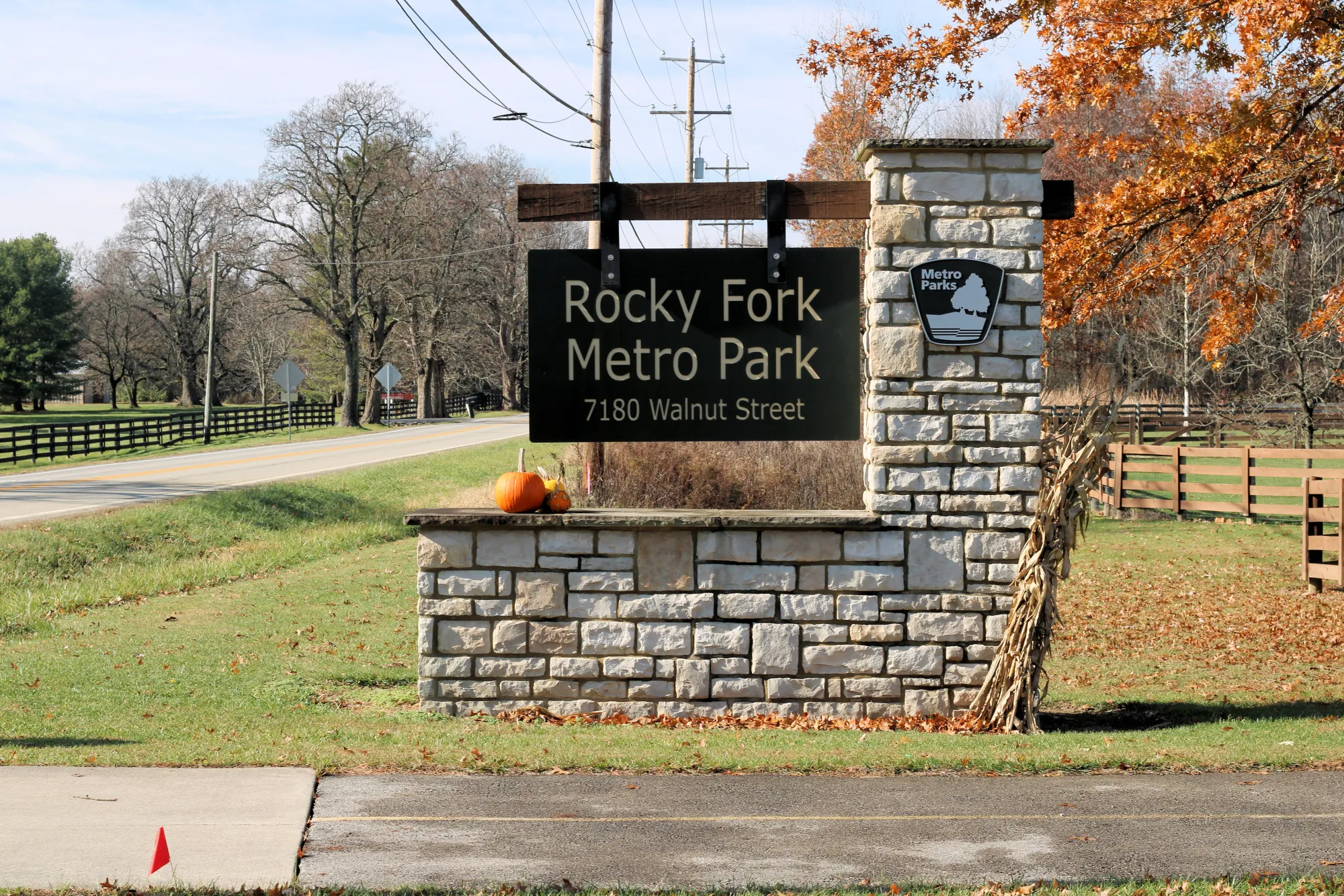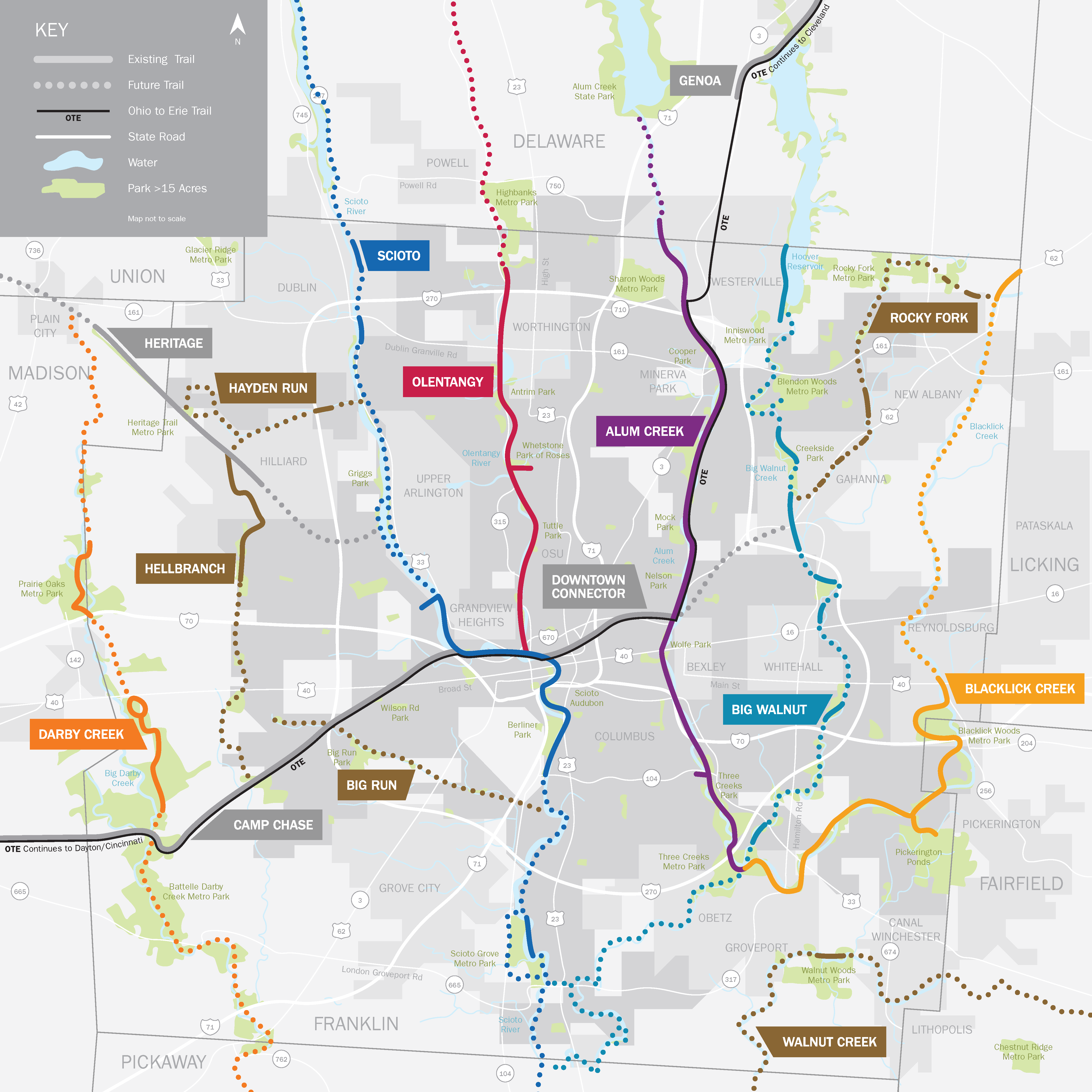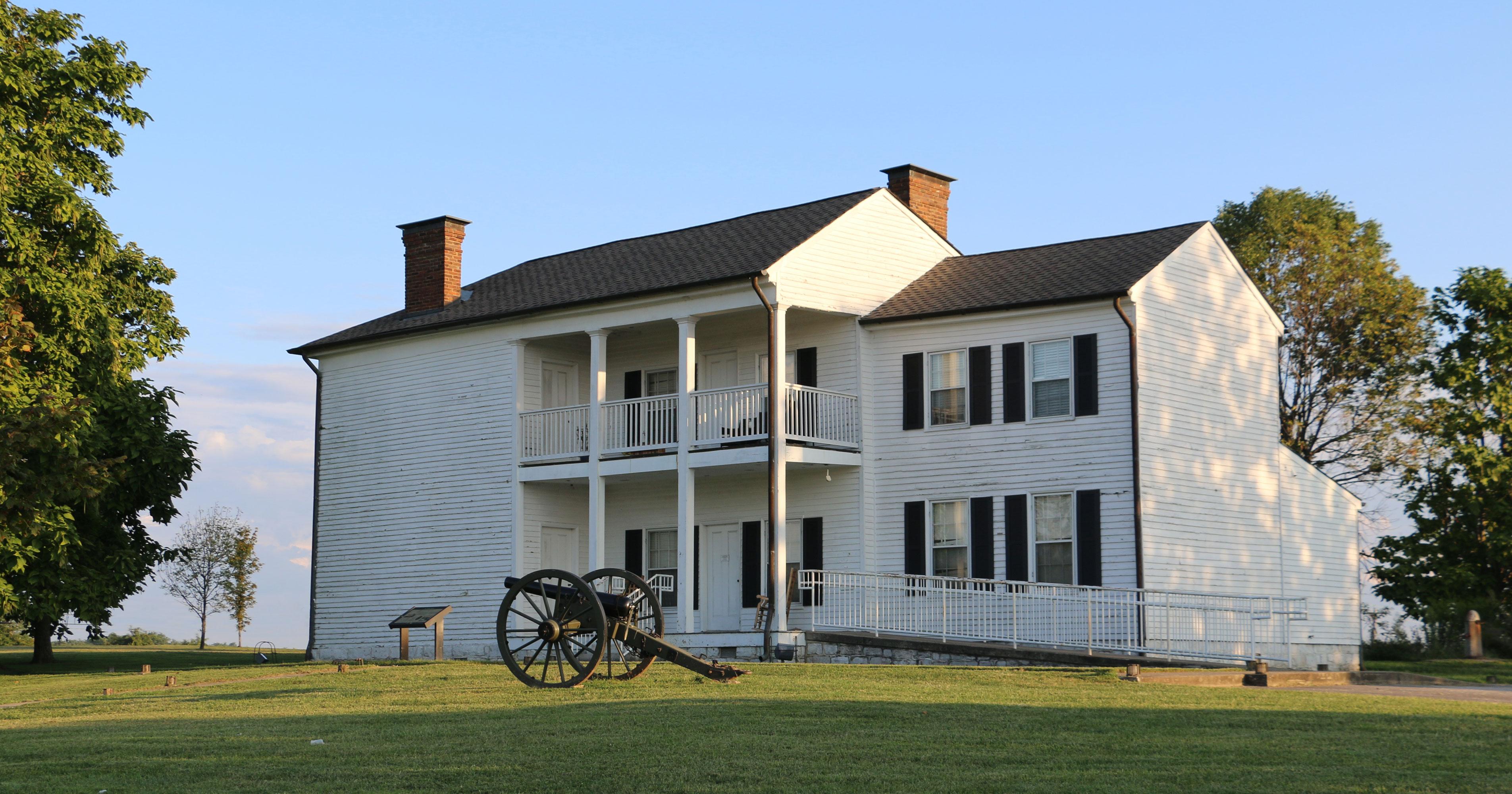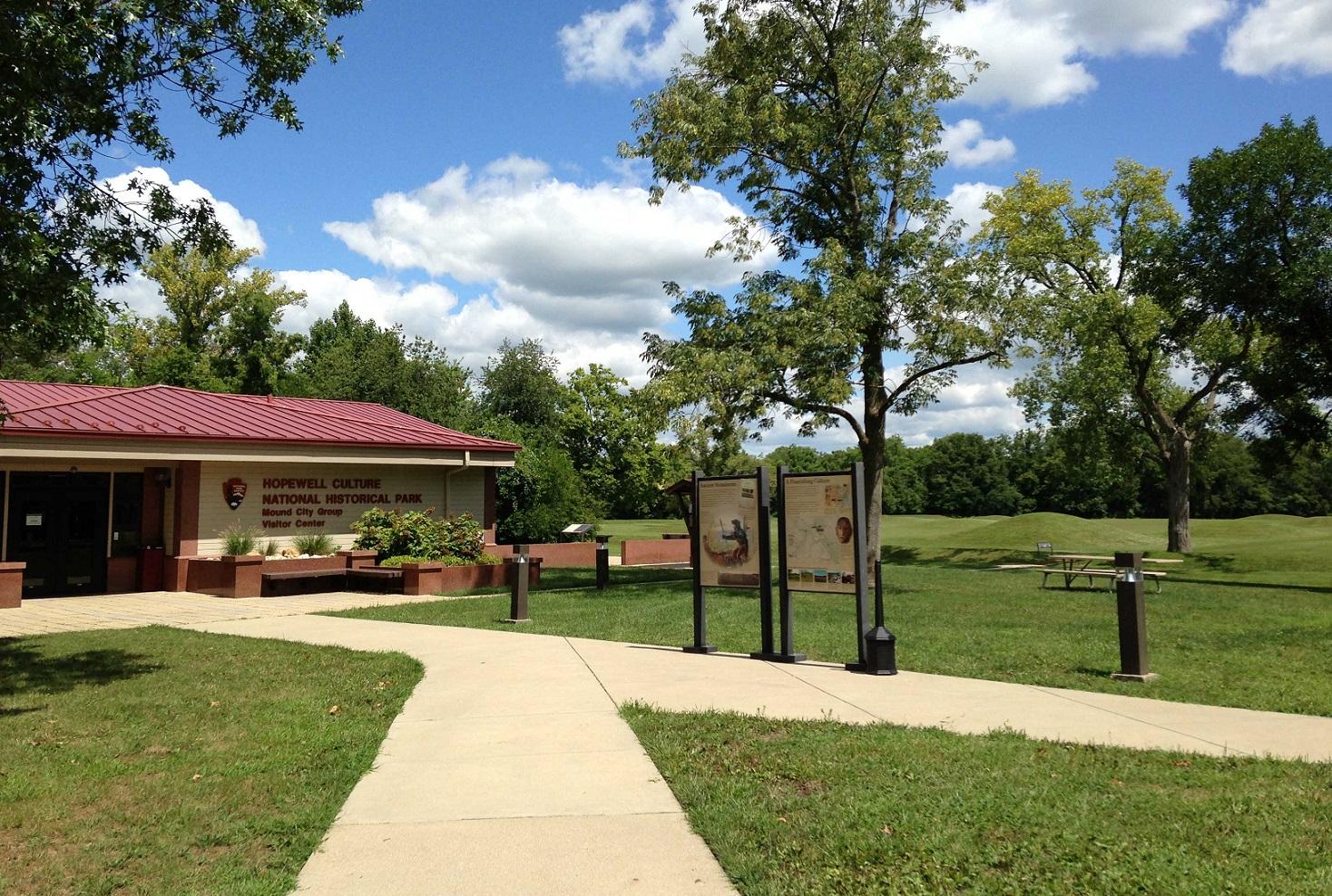
Hopewell Culture National Historical Park
Trail Map
Interactive map showing the trail route for Hopewell Culture National Historical Park. The map displays topographic information and trail markers.
Elevation Profile
Elevation data not available for this trail.
Chart showing elevation changes along the trail distance. Hover or focus on the chart to see specific elevation values at each point.
Have you ever heard of the incredible earthwork complexes in southern Ohio? These monumental mounds and earthen enclosures were built nearly 2000 years ago by American Indians for ceremonial purposes.
The trails that wind through the earthwork complexes offer a one-of-a-kind hiking experience.
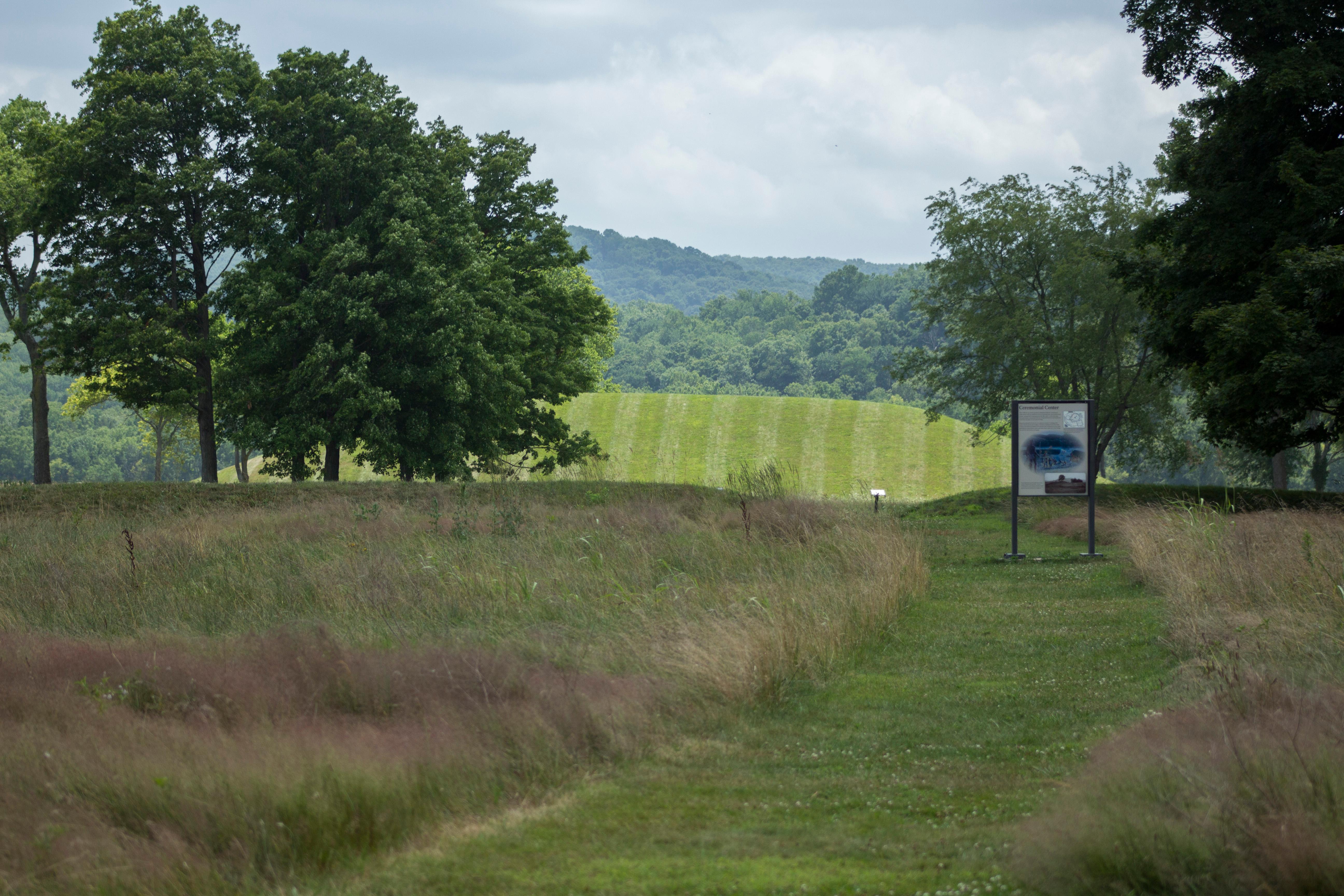
Hopewell Culture National Historical Park
Have you ever heard of the incredible earthwork complexes in southern Ohio? These monumental mounds and earthen enclosures were built nearly 2000 years ago by American Indians for ceremonial purposes.
The trails that wind through the earthwork complexes offer a one-of-a-kind hiking experience. The park also contains remnants of hilltop enclosures and geometric figures that reflect the Hopewell's advanced knowledge of mathematics and astronomy.
The visitor center provides an informative overview about the Hopewell people and displays many artifacts discovered in the park.
The park also provides a chance to observe local wildlife. Deer, foxes, raccoons, groundhogs, turkey and over 200 species of birds can be spotted here. The Scioto River flows through the park and is home to bass, catfish, bluegill and other fish.
With cultural heritage, nature sights, and important history, Hopewell Culture National Historical Park offers meaningful and educational experiences.
Ceremonial Gatherings
This wonder of the ancient world was constructed by Native Americans over many centuries between A.D. 1- 400.
There is no evidence that people lived within this enclosure full time. In fact, the Hopewell people did not even live in large villages. No more than three Hopewell homes have ever been discovered in one place. They may have lived in single extended family units scattered along the waterways of the great forest. Yet, even with this relatively simple social organization, the Hopewell people created immense public works that required complicated engineering. These walled complexes were likely the gathering places of people who wanted to form community even though they were not living together in villages. The reasons for their gathering here could have been both religious and social, but many important ceremonies were conducted here.
One of the most well-known Hopewell sites is the Mound City Group, located in southern Ohio. This complex consists of more than 80 mounds, including the Great Mound, which is the largest earthen mound in the United States. The Mound City Group was built by the Hopewell between 100 BCE and 400 CE and was used for centuries by various Native American groups. The site is now a National Historic Landmark and is a popular tourist destination.
Mound City Group
Mound City Group is the only fully restored Hopewell earthwork complex. Here visitors who walk quietly through the enclosure and among the mounds can still experience a sense of what it may have been like to gather at a Hopewell ceremonial site two thousand years ago.
The monument consists of 25 mounds of varying sizes surrounded by a low, earthen wall.
All of the mounds and walls visible at Mound City today are modern restorations based upon intact base layers, and an extensive record of documentary and field research stretching back more than 150 years.
Mounds are Much More Than Just Heaps of Dirt:
The process by which these American Indians established a burial mound is long and complicated. Many visitors are surprised to learn that where each burial mound is seen today, there once stood a building.
The first step in the mound building process was to construct a large ceremonial building of poles and bark with a plastered clay floor.
Inside, fires burned in clay basins and ceremonies were conducted.
When the ceremony was a funeral, the Hopewell cremated the body.
The ashes were entombed on the floor of the building beneath a small mound of clay. About one hundred cremated remains were found at Mound City.
At some point, the building would be purposely dismantled.
Then the mound construction began. Mound building may have occurred stage by stage over many gatherings, because the mounds consist of many layers of earthen materials, often alternating clay and sand.
The borrow pits outside of Mound City’s walls may have been the source of some of this material.
Camp Sherman:
During World War I the Mound City Group site was occupied by a military training center known as Camp Sherman.

The park also memorializes the World War I veterans from Ross County, where the park is located. The Hopewell Culture National Historical Park was actually established on lands that were originally set aside as a memorial to those lost in the Great War. The park continues to honor these veterans today.
In the early 1920s after Camp Sherman was torn down, the Ohio Historical Society excavated the site and began reconstruction of the Hopewell earthworks and mounds.
A National Park:
The Ohio History Connection funded the reconstruction of Mound City Group in the 1920’s.
The reconstruction was based on the maps of Squier and Davis in order to be as accurate as possible.
One mound was left unreconstructed so that visitors could appreciate the underlying structure of the ceremonial building.
President Warren G. Harding declared the site Mound City Group National Monument in 1923.
In 1992, four more of Chillicothe’s many Hopewell earthwork sites were added to Mound City Group and the name of the park was changed to Hopewell Culture National Historical Park.
Mound City Group is now one of six total units of the park.
Administration offices, resource management, maintenance facilities and the park’s only visitor center are located here.
Entrance, Addresses and Directions to Hopewell Mound Sites:
An entrance pass is not required to access Hopewell Culture National Historical Park.
Other National Park Service sites may require an entrance pass or fee.
Directions from Columbus and all points due north
- Take U.S. 23 south for 38 miles
- Exit U.S. 23 at State Route 207 and turn right
- Continue on S.R. 207 for 2 miles until it merges with S.R. 104 (Make no turns, continue straight on road as it turns into S.R. 104)
- Follow S.R. 104, turn left into park (approximately 1.8 miles past the S.R. 104 & S.R. 207 intersection), follow entrance road to visitor center.
Directions from Portsmouth and all points due south
- Take U.S. 23 north for 43 miles
- U.S. 23 will merge with U.S. 35 near Chillicothe
- Keep left and stay on U.S. 35 west toward Dayton for 1.8 miles
- Exit U.S. 35 at State Route 104 and go right/north on S.R. 104 for 1.6 miles
- After passing state prison, turn right into park, follow entrance road to visitor center.
Directions from Indianapolis, Indiana and points west
- Take I-70 east
- Exit at I-675 and go south for 20 miles (suggested due to construction on I-75 in Dayton)
- Exit I-675 at U.S. 35 in Dayton and go east for 68 miles
- Exit at State Route 104 and go left/north on S.R. 104 for 1.6 miles
- After passing state prison, turn right into park, follow entrance road to visitor center.
Directions from Wheeling, WV and points east
- Take I-70 West to Columbus
- From I-70 Westbound, take I-270 South
- From I-270 South, take to U.S. 23 South towards Circleville
- Go past Circleville and exit U.S. 23 at State Route 207 and turn right
- Continue on S.R. 207 for 2 miles until it merges with S.R. 104 (Make no turns, continue straight on road as it turns into S.R. 104)
- Follow S.R. 104, turn left into park (approximately 1.8 miles past the S.R. 104 & S.R. 207 intersection), follow entrance road to visitor center.
Park Sites Addresses:
Mound City Group
16062 State Route 104
Chillicothe, Ohio 45601
Hopeton Earthworks
990 Hopetown Rd.
Chillicothe, Ohio 45601
Hopewell Mound Group
4731 Sulphur Lick Rd.
Chillicothe, Ohio 45601
Seip Earthworks
7078 U.S. Route 50
Bainbridge, Ohio 45612
GPS Coordinates:
The GPS Coordinates for Mound City and our other outlying units are listed below.
Mound City Group:
39 22'26.62"N 83 00'26.14"W
Hopewell Mound Group:
39 21'38.32"N 83 05'08.65"W
Hopeton Earthworks:
39 22'46.02"N 82 59'04.65"W
Seip Earthworks:
39 14'31.69"N 83 13'15.98"W
Spruce Hill Earthworks:
39 17'13.27"N 83 07'39.63"W
The Mound City Group Visitor Center is located at:
16062 State Route 104, Chillicothe, OH 45601.
Visitor center hours are 8:30 am to 5:00 pm, every day of the week (except Thanksgiving Day, Christmas Day & New Year’s Day).
Park grounds are open every day from dawn until dusk.
Please be mindful that Mound City is still considered a sacred place by many people and treat the earthworks with respect.
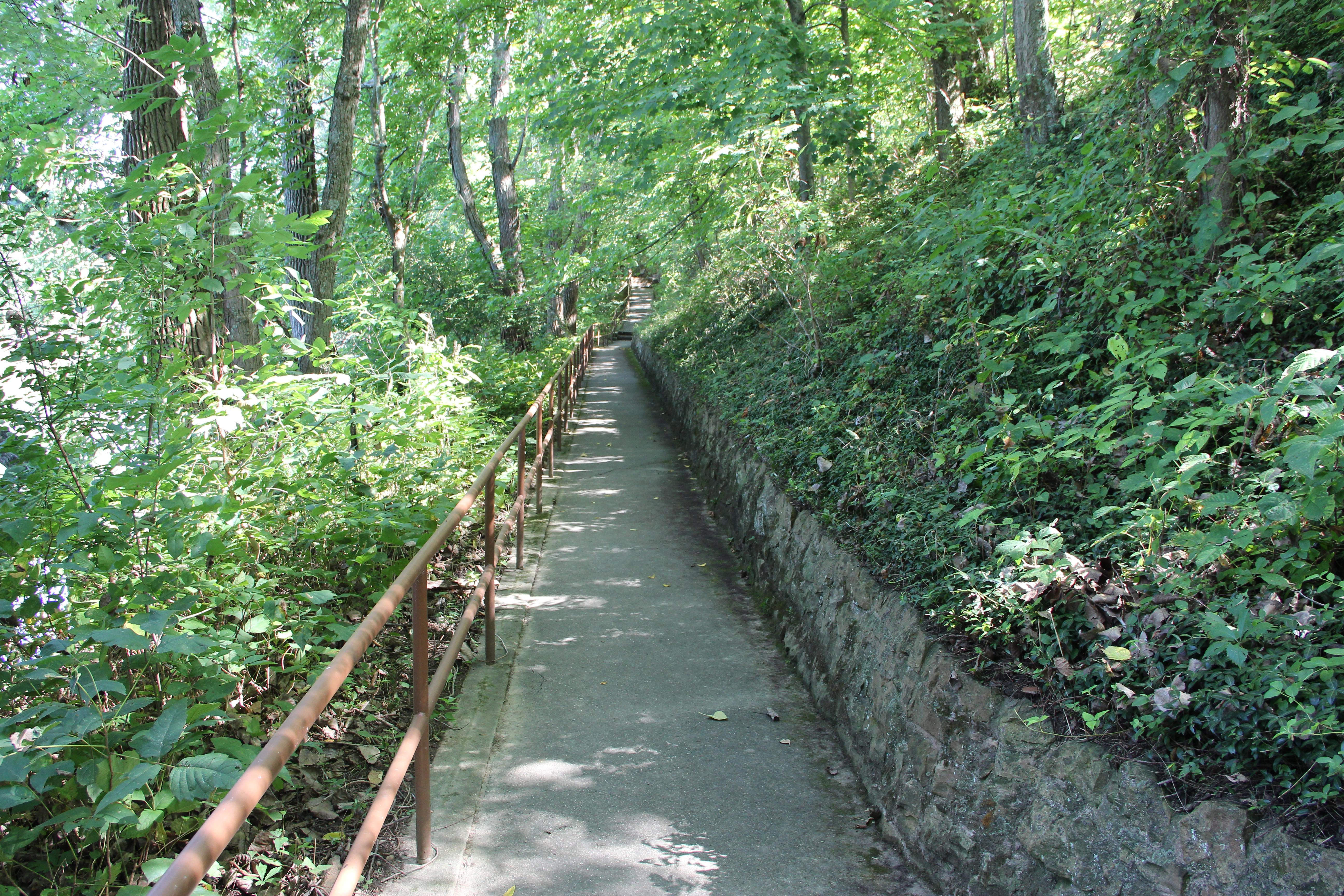
Trails
Trails at Mound City:
There are no trails within the enclosure.
Visitors are welcome to stroll reverently amongst the mounds.
Please do not walk on the mounds or earthen walls.
Park trails include a nature trail and a paved river walk along the Scioto River.
The nature trail winds through a young forest and passes masonry stones from a lock of the Ohio-Erie Canal that ran along the west border of the park in the 1800’s.
Mound City Site Map & Trail Map
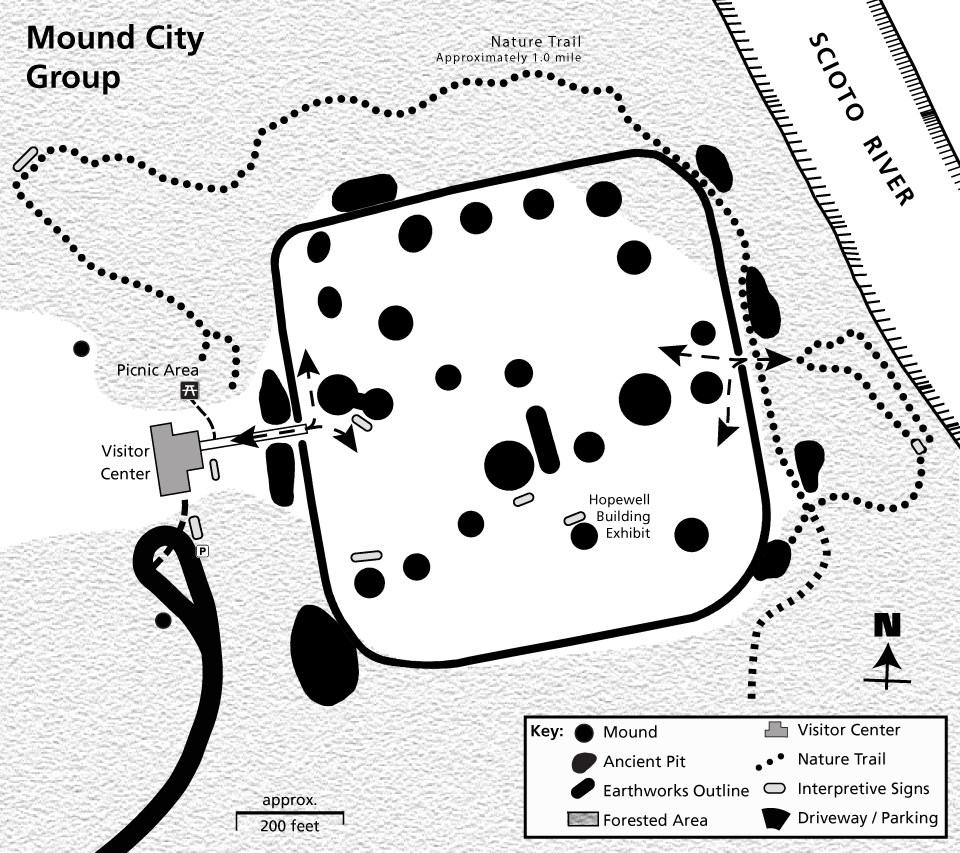
Details
Duration 20-180 minutes
Duration depends on level of interest and personal stamina. A walk around the earthen mounds on the nature trail in the forested part is just under one mile and will average about 30 minutes, depending on pace and level of interest. There are benches situated on the trail for visitor use.
Hiking
Most of the trails and grounds are flat and easy to navigate. There is a descending and ascending part of the trail which goes to the river walk area. That part of the trail is paved and has concrete steps to access the lower walk area. The upper walk area near the river is gravel-covered and flat and has no ascending or descending parts. Trails within the mound area is grass-covered and flat. Trails winding through the forest are mulch and grass covered. Appropriate shoes and/or hiking boots are recommended.
Pets Allowed
Pets are always welcome but must be leashed and in control at all times. Owners are responsible for picking up pet's poop and disposing of properly.
No fees
Location Mound City Group
Mound City Group is located on State Route 104, just on the northen fringe of Chillicothe.
Hopeton Site Map & Trail Map

Details
Duration 60-180 minutes
A round-trip hike to the lookout will likely take about 60 minutes, but length is dependent upon stamina and level of interest.
Hiking
Trails at Hopeton Earthworks are mulch, grass and gravel covered. Trail varies in elevation and there are sections that will require ascending and descending. Hike is rated as moderate. We recommend good walking/hiking shoes or boots.
Pets allowed
Pets are always welcome but must be leashed and in control at all times. Owners are responsible for picking up pet's poop and disposing of properly.
No fees
Hopewell Mound Group is the type-site of the Hopewell culture. It was once home to the largest Hopewell mound ever constructed. Today, it is one of the park's six sites and contains trails for visitors to enjoy. A walk on the trail into the forested area brings visitors to the remnants of a part of the original earthen wall. Open during daylight hours, the trail is about 2.5 miles long with a few changes in elevation. A bike path also runs alongside the complex.
Seip Earthworks Site Map & Trail Map
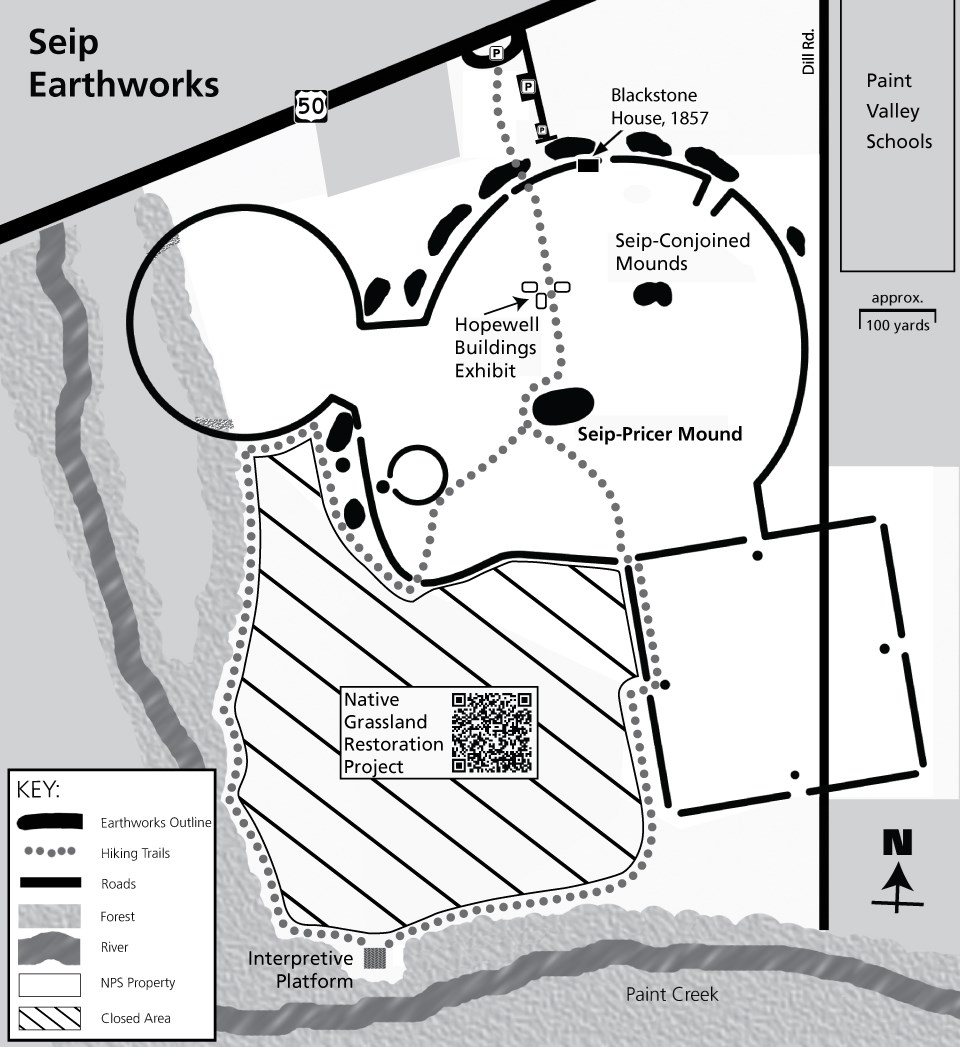
Details
Duration 30 to 180 minutes
Duration depends upon your level of interest and stamina. A walk to the central mound and back to the parking lot will likely take around 30 minutes, depending on ones stamina and pace.
Hiking
Enjoy an easy hike on the scenic nature trails of this prehistoric earthwork site. While the earthwork walls were destroyed by agricultural development centuries ago, the large burial mound in the center of the complex was reconstructed after tedious excavation in the late 1920's. Visitors can continue their walk down to the Paint Creek to enjoy wonderful natural scenes in front of the picturesque Copperas Mountains.
Pets Allowed
Pets are allowed but must be leashed at all times. Owners are required to pick up pet's poop and dispose of properly.
No Fees
Location Bainbridge, Ohio
Located on U.S. Route 50, southwest of Chillicothe, Ohio in Bainbridge, Ohio. Seip Earthworks is located directly next to Paint Valley High School.
Fort Ancient Earthworks & Nature Preserve
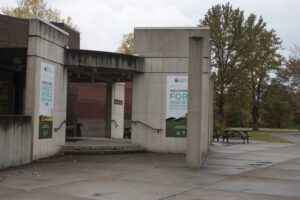
Another significant Hopewell site is the Fort Ancient site, located in the southwestern part of Ohio. This site was occupied by the Hopewell from approximately 100 BCE to 500 CE and is believed to have been a major center of trade and commerce. The site includes a large earthen enclosure, which was used for ceremonial purposes, as well as a number of residential buildings and storage facilities.
Address & Visitor Information:
6123 State Route 350, Oregonia, OH, USA
513-932-4421
Museum and Grounds:
Wednesday-Saturday 10a.m.-5 p.m.
Sunday Noon-5 p.m.
Final admission should be paid by 4 p.m. Gift shop closes at 4:30 p.m. Site closes promptly at 5 p.m.
Guided tours at 2:00 p.m. daily (whenever museum is open).
Museum and grounds may close during inclement weather.
Closed for the following holidays/dates:
Christmas eve, Christmas day, New Years Eve, New Years Day, Easter Sunday, Juneteenth, Independence Day, Thanksgiving Day, Black Friday, Memorial Day and Labor Day.
Admission:
Adult - $7.00 Senior - $6.00 Child (6-17) - $6.00 OHC member - $0.00 Children under 6 - $0.00 Grounds only - $8.00 per vehicle
The Hopewell Culture was characterized by a complex system of social organization and religious beliefs. They believed in a pantheon of gods and goddesses, and their rituals and ceremonies were often associated with these deities.
The Hopewell also practiced a form of ancestor worship, and they believed that the spirits of their ancestors could influence their lives and the course of the world.
The Hopewell Culture was eventually replaced by other Native American civilizations, such as the Mississippian, but their legacy remains. Their earthwork monuments are a testament to their ingenuity and engineering skills, and their cultural practices continue to be studied by scholars and archaeologists.
Today, the Hopewell Culture is recognized as one of the most important and influential Native American civilizations of the pre-Columbian era.

Conclusion
Overall, Hopewell CultureNational Historical Park is a must-visit destination for anyone interested in nature, history, and outdoor recreation.
We hope this information helps you plan your visit to Hopewell Culture park. Don't hesitate to reach out if you have any further questions or need additional assistance. Happy trails!
If you have something you would like to submit to have posted on this website, such as a blog submission or a new hiking trail you think we should check out, please contact us below!

